Project GIPF is a series of eight abstract strategy games designed by Kris Burm. Each game features a hexagonal playing area and involves a dwindling of either pieces or playing area mechanic. The way they approach these elements is not only unique, but combines what I feel are the best qualities in most abstracts: simple rules that reveal complex game play.
If you’ve never heard the games within Project GIPF, GIPF, TAMSK, ZÈRTZ, DVONN, YINSH, PÜNCT, TZAAR, and LYNGK, I encourage you to seek them out, either in cardboard and bakelite or digitally online. They are well worth your time.
Today’s game: LYNGK
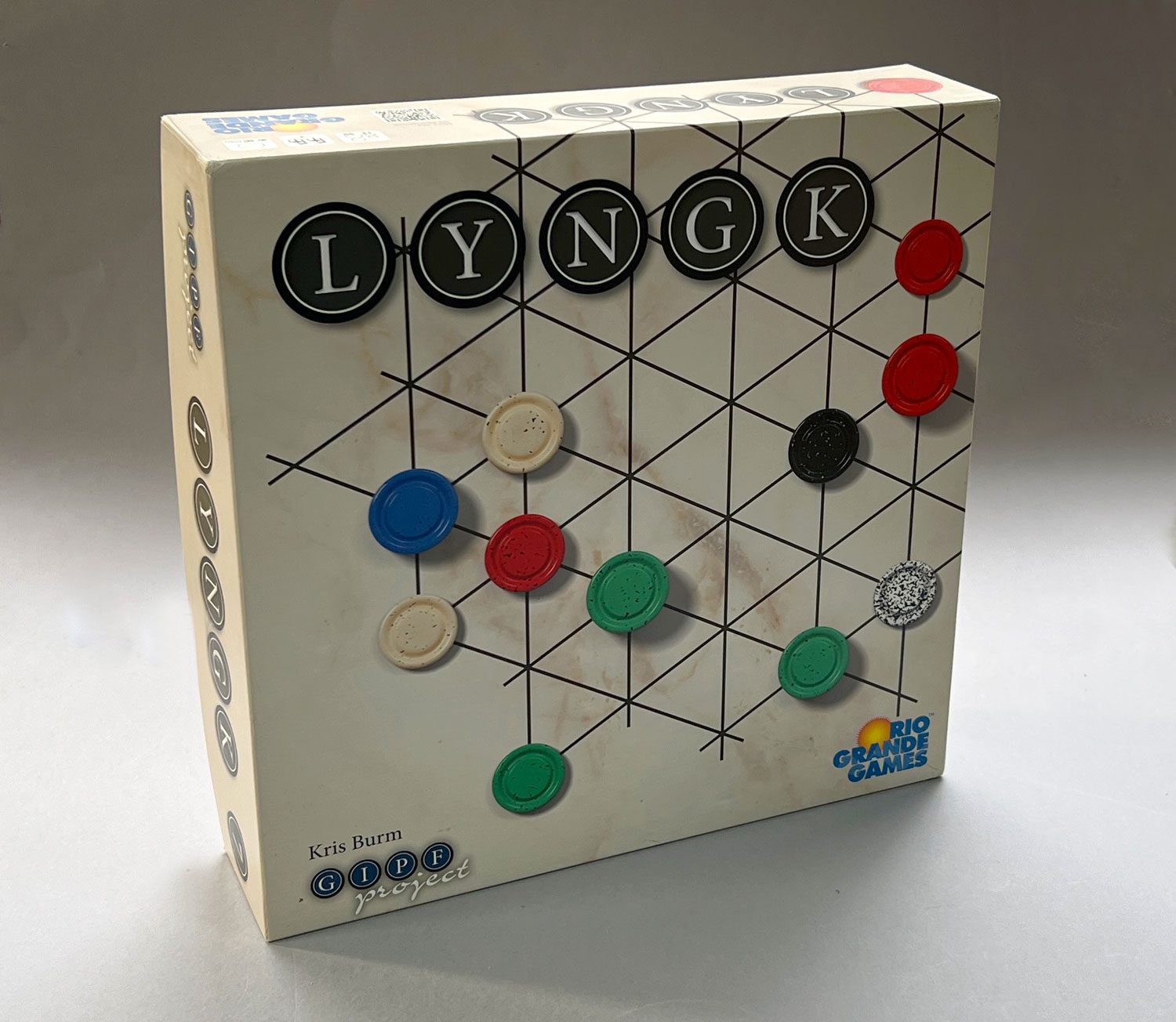
In 2008, Kris Burm announced TZAAR, the last game in his GIPF Project series. Nine years later, to the surprise and delight of many, Burm announced a new game, one that he considered a ‘synthesis’ of the six existing games: LYNGK.
Like most GIPF Project games, LYNGK is played on a board made up of intersecting points. Unlike the other games in the series, LYNGK features bold, colorful pieces.
Like DVONN, LYNGK is a stacking game. However, in LYNGK, the winner is the player who has the largest number of stacks of five different-colored pieces.
Setup
You’ll start the game by taking one piece of each of the primary colors (red, black, blue, green, white) and placing them off to the side. Then you’ll randomly place the remaining 40 primary color pieces, as well as the three gray wild-card pieces, on the intersections that make up the board.
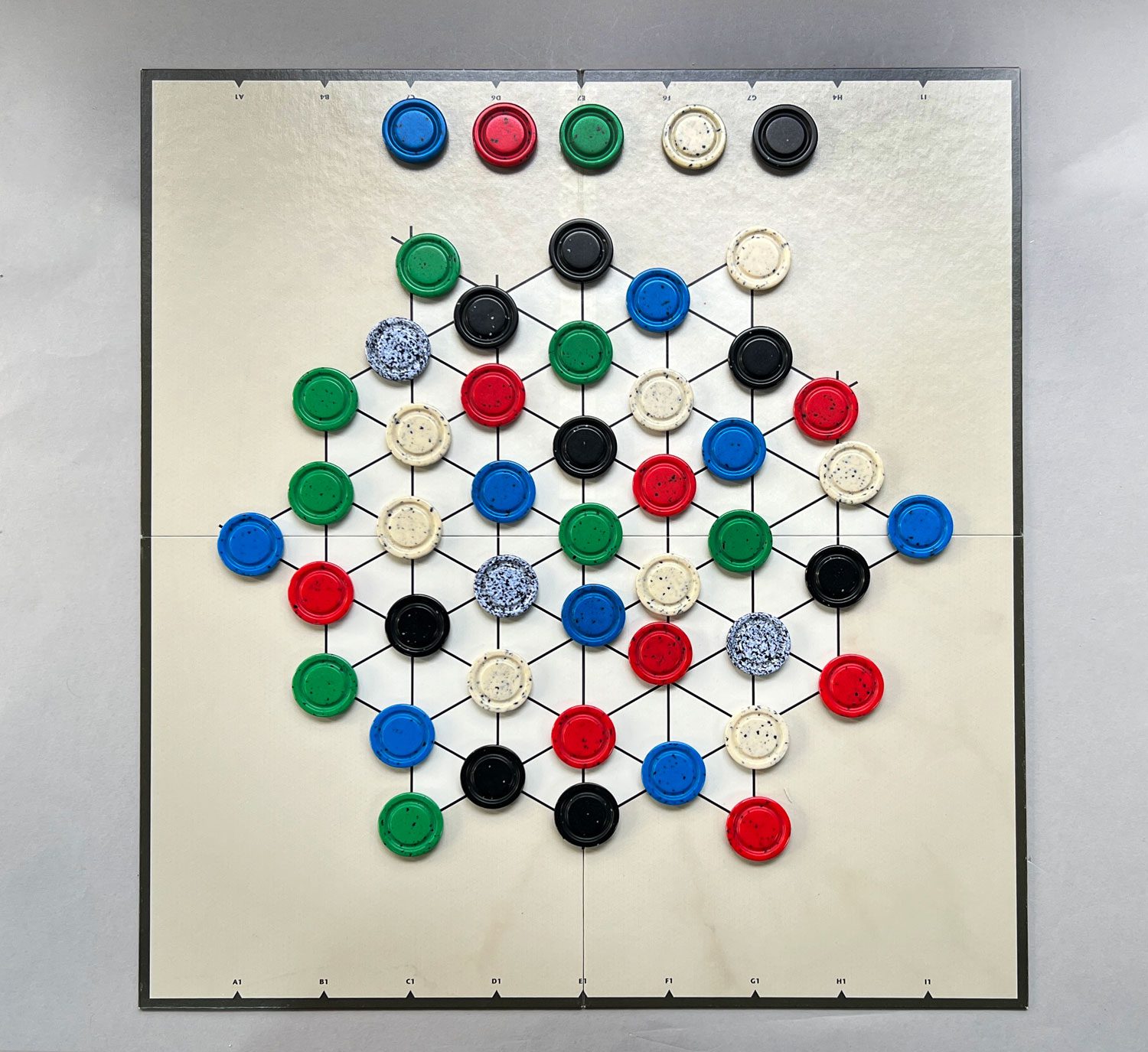
At the start of the game, neither player ‘owns’ any of these five colors. At the start of each turn, you have the option of claiming one of the colors, but you’ll likely want to wait a few turns before doing so, as we’ll see.
How to Play
On each turn, a player must move a piece or a stack of pieces on top of another piece or stack. (“Piece” and “stack” are used interchangeably in LYNGK) When moving a piece, you can place it on top of a piece next to it or move over empty spaces in a straight line to a piece intersections away.
Much like the stacking rule from TZAAR, the height of a stack matters: a single piece can go atop any other single piece, however, it cannot go on top of a stack of two pieces. A stack of taller pieces can land on top of a smaller stack of pieces, including a single piece. And when moving a stack of pieces, you must move the entire stack.
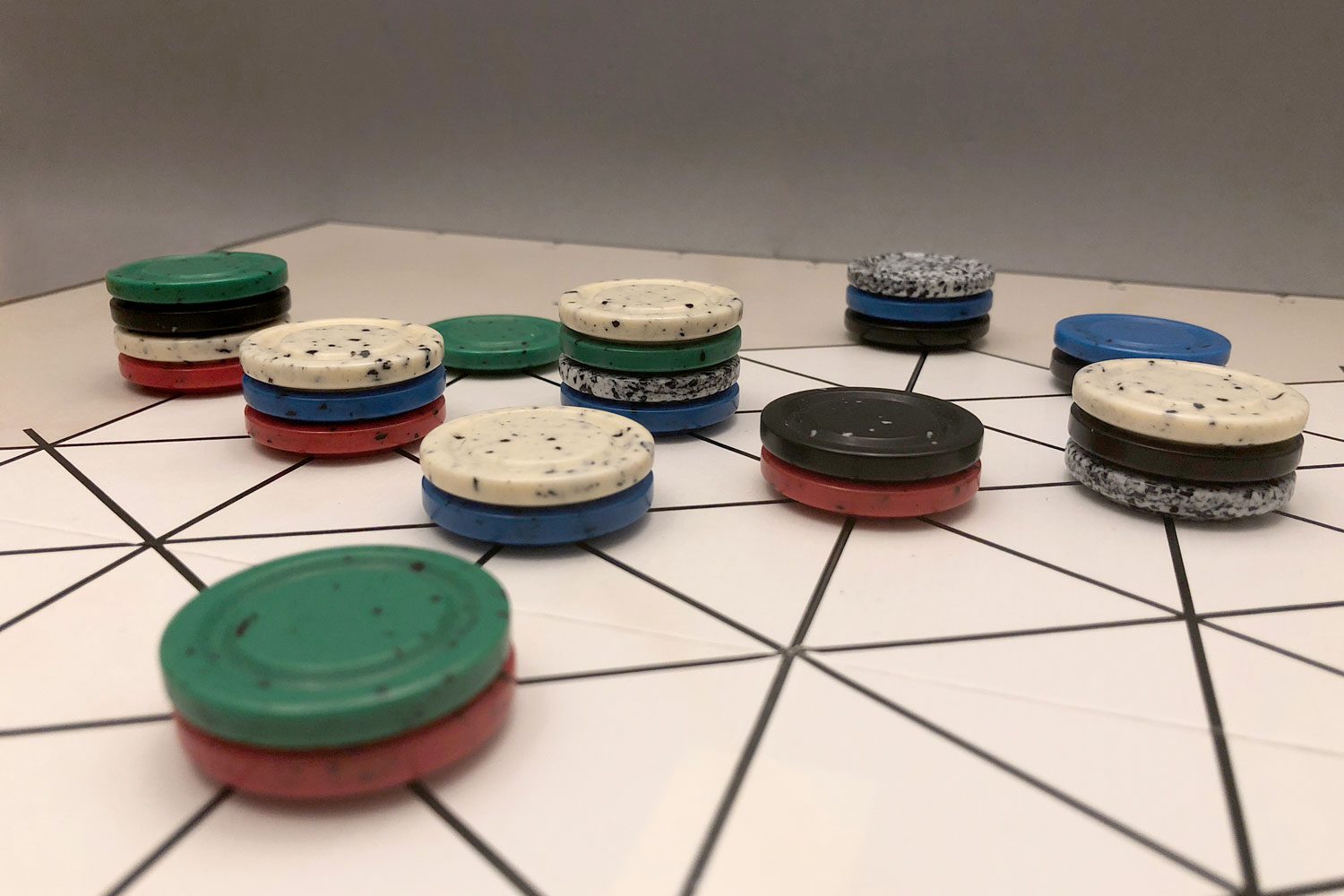
Stacks can only be five pieces high and must only contain one piece of each color. The three gray pieces are wild and you can use them as substitutes for any of the five colors.
Eventually, you will choose to start your turn by claiming one of the colors from the side of the board. To do so, you’ll take the piece in the color of your choice and move it to your side of the board to show your claim on that color.
Claiming a color means for the rest of the game, only you can move the pieces of that color. The stacking rules also change: you can take smaller stacks and move them on top of larger ones—including single pieces—providing a piece of your color is on the top of the moved stack.
During the game, each player will claim two colors. This means one color will remain unaligned. Both players can move pieces of this color.
The gray wild-card pieces remain wild throughout the game. When you place one of your pieces or stacks on top of them, you do not need to declare which color they are. Multiple gray pieces may be captured within a single stack.

Once you complete a stack of five pieces, remove it from the board and set it next to you.
Since winning is a matter of collecting the most stacks of five topped with your color, it might seem like a good idea to claim a color fairly early in the game to start building your empire. However, once you claim a color, your opponent will start placing other colored pieces on top of the remaining pieces of your claimed color. Since there are only eight pieces of each color on the board, you need to study the board carefully and claim a color at just the right moment.
Each of the GIPF Project games has a special rule that makes the game more interesting. With LYNGK it’s the LYNGK Rule.
The LYNGK Rule & LYNGK Thoughts
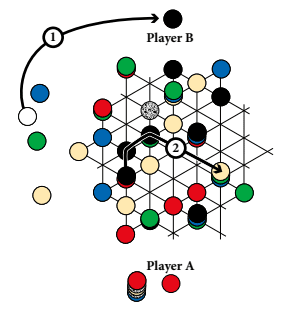 When moving a piece of a color you have claimed, you can use other pieces of that same color as connections to ‘bounce’ off of. In the example used in the LYNGK rule book, Black’s piece at the start of the crooked black arrouw, could claim the Blue piece next to it or any of the single White pieces in a straight line. Instead, thanks to the LYNGK Rule, Black has a better option.
When moving a piece of a color you have claimed, you can use other pieces of that same color as connections to ‘bounce’ off of. In the example used in the LYNGK rule book, Black’s piece at the start of the crooked black arrouw, could claim the Blue piece next to it or any of the single White pieces in a straight line. Instead, thanks to the LYNGK Rule, Black has a better option.
Black can use its connections to the other Black pieces to ‘bounce’ in a series of two straight lines, from Black stack to Black stack until it has a connection to the stack of three pieces currently owned by White. Once Black makes that move, Black has completed a stack of five pieces and will remove it from the board.
I found this rule took a bit of getting used to. It’s unlike any other rule in the GIPF Project, and it opens up strategies in ways that have surprised me each time I’ve used it. (Or had it used against me.)
Starting with the colors being unclaimed, then watching the early board develop, trying to find the right moment to claim a color is a great mechanic. Then, once both players have selected their two colors, switching gears to balance offense with defense is a mental workout. Add to that, looking for possibilities to use or block the LYNGK Rule makes this game a stand-out.
I’ve taught LYNGK to seasoned gamers and new players alike. It’s an easy teach, and quick to set up. As with all the games in Project GIPF, somewhere between the fourth and sixth move, the depth of complexities start to make themselves known. I will never tire of seeing the nod of appreciation that first-time players give. I’ll also never tire of the requests for a second game as soon as the first one ends.
LYNGK is so, so good.
Here's a list of all Project GIPF reviews.

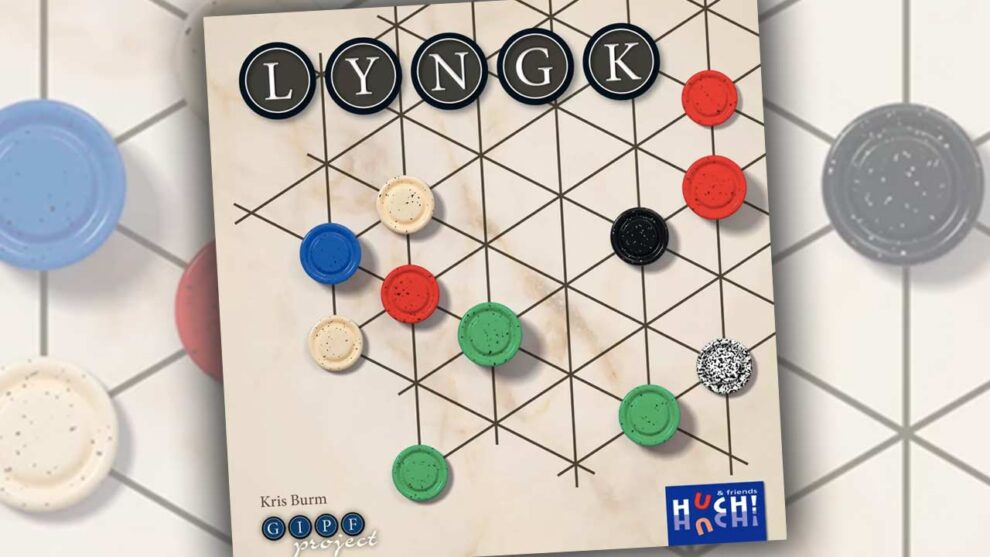









Add Comment